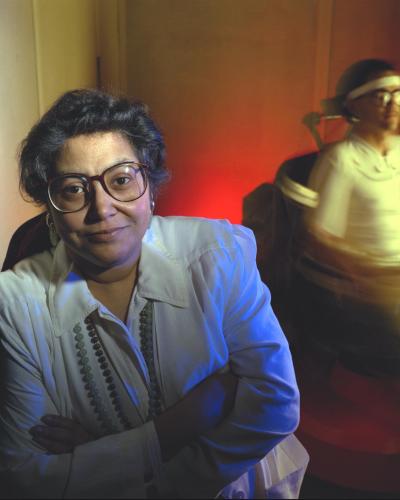
Dr. Patricia Cowings, Project Manager of the Psychophysiological Lab, Principal Investigator of the Autogenic Feedback Training Experiment Studying Motion Sickness. NASA.
By Sara Cohen of Because of Her Story; Caitlyn Dittmeier of Smithsonian Working Land and Seascapes; Kristen Goodhue of the Smithsonian Environmental Research Center; Janay McIntosh of the Smithsonian's National Museum of Natural History; Emily Niekrasz of Smithsonian Libraries and Archives; Hannah S. Ostroff of the Smithsonian; Amy Stamm of the National Air and Space Museum; and Sydnee Winston of Smithsonian Institution Traveling Exhibition Service
Creative problem-solving has allowed scientists and engineers to learn more about the world, whether the far reaches of space or the bottom of the ocean floor. Several Smithsonian museums and centers recently shared stories of women innovators, past and present, on social media. Here are their stories.
1. Research Psychologist Dr. Patricia Cowings
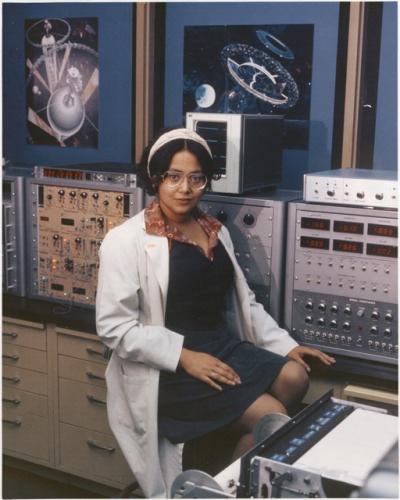
Dr. Patricia Cowings. National Air and Space Museum Archives, Smithsonian Institution.
When in space, many astronauts experience psycho-physiological and biological problems called space sickness. Dr. Patricia Cowings, a research psychologist in the Biomedical Division of NASA's Ames Research Center, conducted research to help astronauts overcome space sickness.
Cowings' tests induced sickness so she could learn how to combat the effects. Because astronaut training time is precious, she had to come up with a program that would teach astronauts to learn to control the sickness in less than six hours. Cowings designed a program of 12 half-hour sessions combining training with biofeedback. During training, she taught a subject to mentally evoke a sensation, like relaxation of muscles, to bring about desired physiological changes such as increased skin temperature or release of muscle tension.
Cowings' approach to biofeedback taught astronauts to control as many as 26 physiological functions related to motion sickness. These included such things as heart rate, rate of respiration, and the flow of blood to the hands. Subjects learned to regulate these autonomic (unconscious) functions by watching them as they are displayed on an oscilloscope.
2. Zoologist Dr. JoGayle Howard
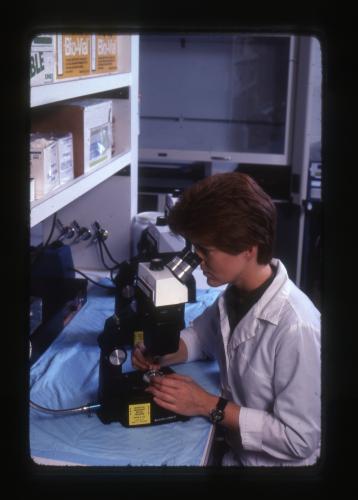
Dr. JoGayle Howard works with embryos from the National Institutes of Health at the dissecting microscope, 1982. Smithsonian Institution Archives.
Dr. JoGayle Howard was a trailblazer in endangered species reproduction. She adapted techniques used in human infertility treatment to breed endangered species at the Smithsonian's National Zoo.
Much of Howard's research focused on felines—clouded leopards, cheetahs, fishing cats, panthers, and even domestic cats. In 1992, she performed the first successful artificial insemination of a clouded leopard.
Howard also oversaw the black-footed ferret breeding program at the Zoo. In the 1980s, there were only 18 individuals left. Under her supervision, more than 500 kits were born.
Perhaps Howard's most well-known accomplishment was the birth of the National Zoo's first surviving giant panda cub, Tai Shan. She personally performed the artificial insemination of Mei Xiang.
Howard died in 2011 from melanoma at age 59. She is remembered at the Smithsonian and around the world for her trailblazing work in theriogenology, the specialized study of reproduction in veterinary medicine.
3. Technician Keira Heggie
Aquatic biologists have a faster, less invasive way to survey Chesapeake oyster reefs, thanks to technician Keira Heggie and Dr. Matt Ogburn. These scientists at the Smithsonian Environmental Research Center in Edgewater, Maryland, devised a technique to collect photos and video underwater by strapping GoPro cameras to a PVC frame. Using underwater cameras, they can survey five times more sites than if they had to use diving teams. You can see an underwater video the team captured of a striped blenny enjoying a reef.
Dr. Allison Tracy, a postdoc with the center and the Smithsonian's Working Land and Seascapes initiative, is currently leading a team to map oyster habitat. Her team works at an unprecedented scale thanks to Heggie and Ogburn's innovation. Tracy says, "The beauty of the GoPro-based tool is that we can deploy it many times in a single day and get a rapid assessment of oyster habitat."
4. Engineer Mary Golda Ross
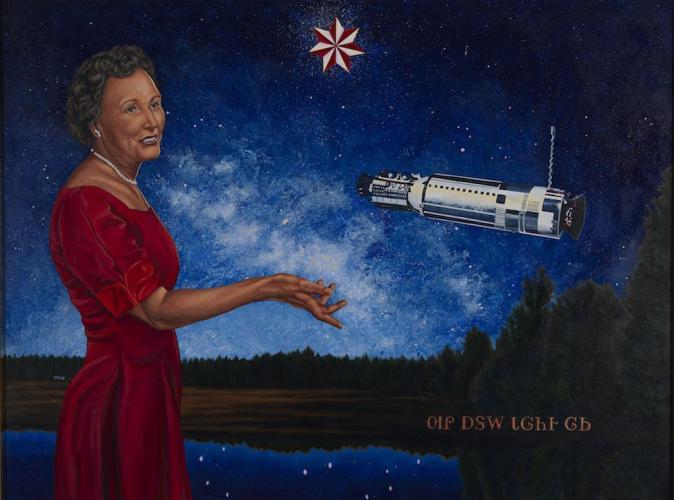
“Mary Golda Ross: Ad Astra per Astra” by America Meredith (Cherokee Nation), 2011. Acrylic on canvas. National Museum of the American Indian, Smithsonian Institution.
Mary Golda Ross (Cherokee Nation), the first known Native American aerospace engineer, was a member of a top-secret team planning the early years of space exploration.
Ross joined Lockheed Aircraft Corporation during World War II, helping design the P-38 Lightning fighter airplane. Later, during the space race, she was one of 40 engineers in the company's think tank that became known as the Skunk Works. Ross was the only woman on the team aside from the secretary, as well as the only Native American. Much of her research and writing at the Skunk Works remains classified today.
When Lockheed formed a new company focused on missiles and space, Ross worked on projects including the submarine-launched Polaris missile and the Agena launch vehicle, which carried payloads to space. An Agena-B upper stage used during the 1960s is in the Smithsonian's National Air and Space Museum.
Artist America Meredith (Cherokee Nation) commemorated Ross in her painting "Ad Astra per Astra." The title means "to the stars from the stars." It references a Cherokee origin story of how humans arrived on Earth from the Pleiades. The painting is in the collection of the Smithsonian's National Museum of the American Indian. Ross, a lifelong advocate for girls in STEM, attended the opening of the museum in 2004.
5. Rear Admiral Grace Hopper
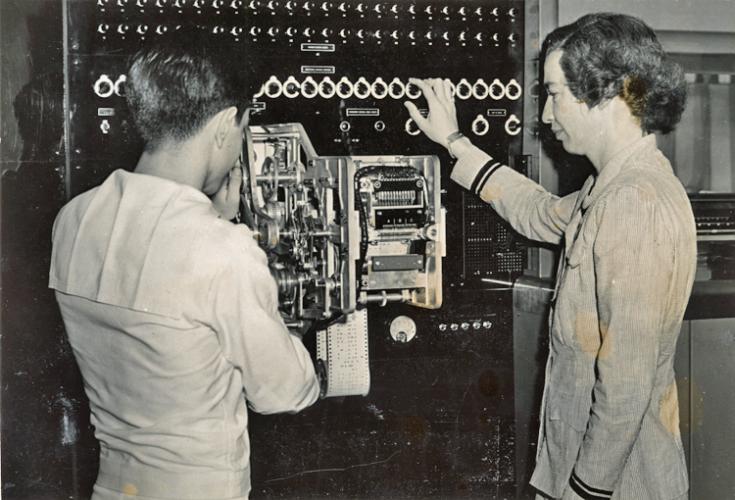
Lieutenant Grace Hopper and US Navy Specialist I, Third Class, Durward White inspecting the Mark I's sequence mechanism, 1944. Grace Murray Hopper Papers, Archives Center, National Museum of American History, AC0324-0000036. © Smithsonian Institution
Grace Murray Hopper earned her doctorate in mathematics from Yale University. When World War II began, Hopper was on the math faculty at Vassar College. In 1943, she joined the U.S. Navy Women's Reserve (the WAVES) and was assigned work at Harvard's Cruft Laboratory on the Mark I computer (formally known as the Automatic Sequence Controlled Calculator). Her instructions for running complex computations were punched into paper tapes that were fed into the machine. With her work at Harvard, Hopper became one of the first computer programmers.
In 1949, she took a position as senior mathematician at the Eckert-Mauchly Computer Corporation (later UNIVAC Corporation). Her work was not in strict mathematics, but what we call programming today. Hopper invented a compiler—software that translated instructions written by humans into commands used to run a computer. Hopper said, "The computer should learn how to respond to people."
She also developed the data processing language FLOW-MATIC for the UNIVAC I computer. FLOW-MATIC used commands written much closer to common English than earlier computer code. Hopper later encouraged development of computer languages, such as COBOL, that ran on computers built by several different manufacturers.
During the Vietnam War, the U.S. Navy once again accepted women in its ranks. Hopper rejoined, eventually rising to the rank of Rear Admiral. When she retired in 1986, she was the oldest officer on duty in the armed forces.
You can learn more about Hopper and other women innovators in Diverse Voices: Women Inventors from the Smithsonian's Lemelson Center for the Study of Invention and Innovation, the Smithsonian's National Museum of American History's blog, and the Picturing Women Inventors poster exhibition from the Smithsonian Institution Traveling Exhibition Service.
6. Geologist and Oceanographic Cartographer Marie Tharp
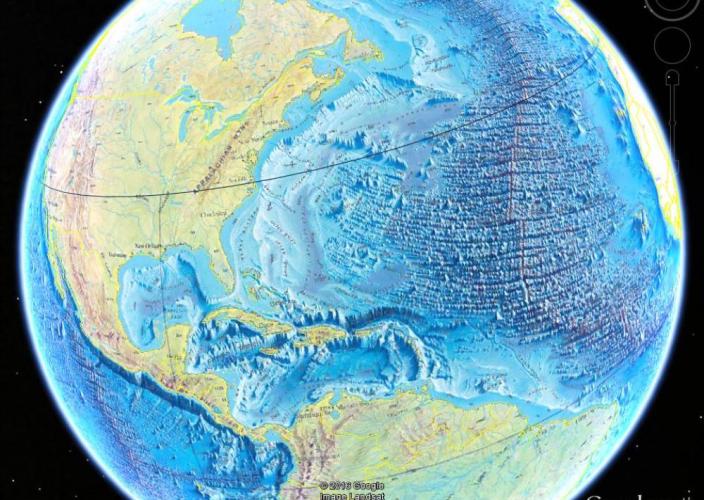
A map of the mid Atlantic Ridge by Marie Tharp (Marie Tharp Historical Map Google Earth)
Some landmark discoveries lead to innovation. Others to revolution. Geologist and oceanographic cartographer Marie Tharp launched a new era of Earth science when she mapped the floor of the Atlantic Ocean and discovered the Mid-Atlantic Ridge.
Tharp's 1957 physiographic map of the North Atlantic ocean floor was a key piece of evidence supporting the theory of plate tectonics.
"I think our maps contributed to a revolution in geological thinking," Marie Tharp wrote in 1999. "You could see the worldwide mid-ocean ridge and you could see that it coincided with earthquakes. The borders of the plates took shape, leading rapidly to the more comprehensive theory of plate tectonics."
Tharp's work set the stage for other innovators, including Smithsonian research geologist Elizabeth Cottrell, who studied at Tharp's academic home, Colombia University's Lamont-Doherty Earth Observatory. "In my office, my most prized possession is Marie Tharp's physiographic map of the seafloor," says Cottrell. "It is a research tool that doubles as a work of art. Mine is irreplaceable; it bears Tharp's signature, which I humbly received at the 'altar' of the patron saint of women in STEM [Science, Technology, Engineering, and Math] while a graduate student."
Learn more about Marie Tharp from Smithsonian magazine and the Smithsonian's Ocean Portal website.
Related Posts
Sara E. Cohen is the digital audiences and content coordinator for Because of Her Story, the Smithsonian American Women's History Initiative. She shares lesser-known histories of women through this website, Because of Her Story newsletter, and Smithsonian social media.
Caitlyn Dittmeier is an outreach and communications intern for Smithsonian Working Land and Seascapes. She works with researchers to share stories about community-driven conservation science in the Rappahannock and Chesapeake Bay region.
Kristen Goodhue is the science writer for the Smithsonian Environmental Research Center. She shares stories about climate change, invasive species, ray tagging, and other coastal science research on the center's online platforms.
Janay McIntosh is the social media producer at the Smithsonian's National Museum of Natural History. They work closely with Smithsonian researchers to create social media content ranging from botany, anthropology, paleobiology, and more!
Emily Niekrasz is the website and social media content manager at the Smithsonian Institution Archives. She researches, writes, and edits blog posts, social media content, and new pages for the website.
Hannah S. Ostroff is a digital communications editor at the Smithsonian. She manages the institution's central social media accounts, sharing the depth and breadth of the Smithsonian with audiences on Instagram, Twitter, and Facebook.
Amy Stamm is the head of social and editorial content at the Smithsonian's National Air and Space Museum. She works across various digital platforms to share iconic moments in aviation and space and elevate lesser-known stories and voices.
Sydnee Winston is the social media specialist at the Smithsonian Institution Traveling Exhibition Service (SITES) and Smithsonian Affiliations. She manages SITES's social media platforms, curating content that reflects a wide range of subjects explored in SITES's traveling exhibitions. She also uses Affiliation's social media platforms to elevate the work of the Smithsonian's more than 200 Affiliate museums and organizations across the nation.